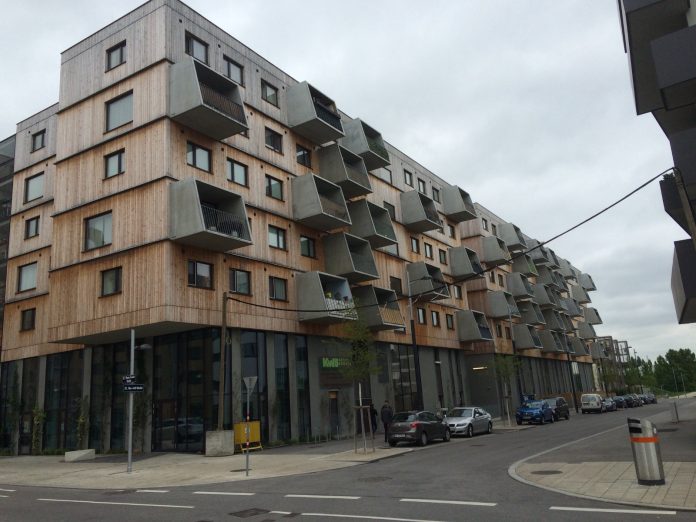Seattle is in the midst of a broad and deep housing shortage affecting households across the economic spectrum, which will require bold action on the municipal level — especially in the face of potential housing cuts from the United States Department of Housing and Urban Development (HUD), HUD rent increases, as well as continued inaction and inadequate support from the state.
Unfortunately, given population growth, financial hurdles, land use impediments, and land costs — it is increasingly difficult to build housing that is affordable to the middle class or that could be made available to those who can’t afford anything close to Seattle’s median single family home, which is now (over) $820,000— and climbing. Nearly a fifth of all single family homes in Seattle have no mortgage. Many single-family homes are past their lifespan, requiring energetic and seismic retrofits.
Seattle severely lacks the zoning for affordable multifamily housing. Today, multifamily housing is illegal on 72% of all land in the city where housing is legal (or 80.3% per fancy beans) — a stunning reversal from where things stood a hundred years ago. Seattle’s original land use regulations allowed multifamily housing everywhere in Seattle (yes, everywhere). The introduction of single-family zoning in the 1923 comprehensive plan, and subsequent revisions, made matters worse, with large sections of multifamily land downzoned to zone out affordable and multifamily housing.
This enforced scarcity has driven up the value of all single family homes in Seattle to over a $110 billion dollars (135,000 single-family homes $820,000 median home value). $5.8 billion of that increase came in just one month. What if there was some means of utilizing those increases to fund large quantities of moderately affordable housing, relieving pressure on existing rentals, giving middle class households a foothold in the city, and providing aging residents a means of residing in their neighborhoods in accessible units close to the community they’ve always known?
A cooperative overlay of single-family zoning could be such a vehicle, providing ample, affordable, non-market housing in areas of high opportunity in our city. A cooperative is a group that collectively owns a building (or group of buildings), each person owning a percentage share of the building, with that share entitling them to live in a certain unit in the building. Zero Equity and Limited Equity Co–ops are two forms of cooperatives intended to build and preserve affordable housing by removing the profit motive from housing, and limiting resale value in perpetuity. Cooperatives are nearly a quarter of all homes in Zurich, Switzerland, and the housing politics of that city aim to increase that number going forward. We should follow suit. There is an added benefit with cooperatives, as Washington State regulations around condos are vague, that, when paired with the recession effectively cratered condo construction, and there are added liability and insurance costs associated with condos that co-ops bypass.
The overlay could work like this — homeowners could team up with locals to form a cooperative structure — either through local groups, or with city assistance. The group would progress, and share distribution for units would be straightforward. The cooperative could figure out a repayment method on land, or utilize a ground lease to keep the initial development costs even lower. The cooperative utilizes the land as part of the collateral to obtain its construction loan, and the construction of the cooperative would commence.
What would the physical form of the overlay look like? At a minimum, the city could move forward as with a previously proposed policy to allow triplexes in the massing of current single family zoning. On a typical 5,000 square foot (sf) lot, today, a homeowner or developer can construct a building up to 5,250 sf (1,750 sf x three floors). This could result in a five-unit building with 1,000 sf units. An increase to four floors in or near urban villages would also be beneficial. With a floor area ratio (FAR) of 1.4 and a four floor height limit, 7,000 sf buildings on a 5,000 sf lot would be feasible.
The four-floor limit works for a number of reasons. First, it means that the cooperative can be constructed with wood, reducing construction costs. Second, it means that the cooperative can be constructed with or without an elevator — leaving the ground floor unit(s) as accessible. A four floor height limit is keeping within the scale context of three-story single family homes, which the city will continue seeing more of as older homes are replaced by larger ones with no increase in the number of units. The overlay would need to allow for more than eight people living on a single lot. A 7,000 sf building could easily house seven 1,000 sf units, but could also allow for a multitude of options — including larger units for multi-generational housing.
Financing the development is difficult, traditional banks will not finance a co-operative — however local credit unions have expressed an interest in financing co-housing and co-operatives. In Switzerland, the Zuercher Kantonalbank funds a number of cooperative — and Seattle’s about to embark on a study for a municipal bank. The cooperative would use the land and owner investment shares to obtain construction financing, and pay off the mortgage through rents, which are kept low by removing the land procurement issue of typical development. An alternative structure would be a syndicate —a linked network of projects (a la the mietshaeuser syndikat) that could be used to scale up the number of cooperatives by leveraging a monthly solidarity fund among members, and through the connected value of the projects as loans are paid down.
The end result of the cooperative overlay would be the potential for several thousand high-quality, affordable, family-sized, accessible homes. These cooperatives, formed by residents in conjunction with homeowners, would ensure that residents and existing homeowners could age in place. They would reduce displacement risk — as no residents would be displaced, and they would increase housing security at a time where security of tenure is increasingly difficult.
Such a scheme could be a model for the region, if not the nation. However, until multifamily and affordable housing are once again legal everywhere housing is legal in Seattle, we won’t begin to come close to addressing our housing crisis.
This featured image is a cooperative with a prefabricated wood facade in Vienna’s Seestadt Aspern, foto by author. This is a cross-post that first appeared on Mike Eliason’s Medium blog.
Mike is the founder of Larch Lab, an architecture and urbanism think and do tank focusing on prefabricated, decarbonized, climate-adaptive, low-energy urban buildings; sustainable mobility; livable ecodistricts. He is also a dad, writer, and researcher with a passion for passivhaus buildings, baugruppen, social housing, livable cities, and car-free streets. After living in Freiburg, Mike spent 15 years raising his family - nearly car-free, in Fremont. After a brief sojourn to study mass timber buildings in Bayern, he has returned to jumpstart a baugruppe movement and help build a more sustainable, equitable, and livable Seattle. Ohne autos.


